
When a parent is told that their child is at risk of being retained, their initial response is often full of emotion. Frustration, anxiety and even guilt are felt. We can relate to that. As parents and Directors of 3D Learner, we strongly encourage parents to take a proactive approach to helping your child succeed. At 3D Learner our goals are to:
- Help parents realize that third grade retention risks are not your fault.
- There are a number go Good Cause Exemptions to help your child to avoid third grade retention and to be promoted
- Help you be an Informed, Empowered and Proactive parents who:
- Work together to help your child to be promoted
- Understands the depth of your child’s reading comprehension and related issues
- Becomes even more aware of your child’s strengths and challenges
- Partners with your child’s school and the right outside professionals to help your child to make significant gains in their reading comprehension and processing skills, so they are promoted and are much more successful in 4th grade and beyond
If your child is at risk for third grade retention or grade retention in any grade, we encourage you to join us for a presentation on March 13th at 9 pm on:
How to Beat Third Grade Retention or Other Grade Retention Risks by
Improving Reading Comprehension
Click here to register or
Call us at 561-361-7495 to discuss your situation or click here to schedule a
Beat Third Grade Retention by Improving Reading Comprehension Conversation
As one mom said, “How is it that after 5 minutes, you appear to understand my son’s strengths and challenges better than people who have known him for years?”
Our advantage is we have been helping bright right brain learners succeed for 27 years.
5 Key Points About Third Grade Retention
1- There are a number of Good Cause Exemptions that can be utilized to help a child to be promoted. The Florida Department of Education has created a valuable Read to Learn Document that can help you understand your options.
2- Most students facing third grade retention are 1, 1.5 or even 2 years below grade level in reading comprehension. If their reading comprehension issue is not addressed, the student is likely to struggle even more in 4th grade. After 3rd Grade, students are expected to READ TO LEARN; there is no more emphasis on reading instruction in the general classroom. That is the time when math, social studies and science require students to understand what they read. It is also a time when the print gets smaller, the pictures disappear and students with reading comprehension really struggle. Conversely, students who make significant reading comprehension gains by 4th grade have done much better.
3- In a small number of cases, third grade retention is right for a child. The child does not have sufficient all-around foundational skills to succeed in 4th grade. These might include cases where the child has a late summer birthday, they may have learning and attention challenges, and they would be better off not being promoted. This past year, we helped a few students where parents chose to homeschool their child, have a catch-up year, and make the decision about promotion later. In Florida, the Florida Empowerment Scholarship provides parents whose child has a qualifying disability to get around $10,000 a year that can be used for tutoring. For other students, there is a Personalized Education Program scholarship for $8000 that can be used for tutoring.
4- Many students facing third grade retention are right brain, kinesthetic or neurodivergent learners, who learn differently than the way most schools teach. These kids learn best when they see and experience information. They may also have dyslexia and/or working memory, processing speed, attention and/or visual processing issues.
5- By capitalizing on your child’s strengths and addressing their challenges, it is often possible to both beat third grade retention and to position your child to be far more successful in 4th grade and beyond.
Note, we have helped third graders to:
- Beat third grade retention and score well above grade level by 4th grade
- Improve their reading comprehension by 3 grade levels in a year
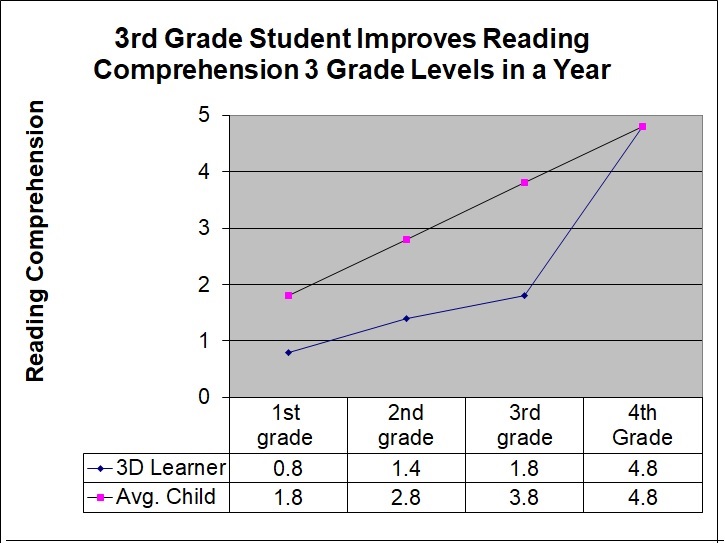
A year later his teacher commented, “He made more progress in a year than any student I have had in 27 years of teaching”
- Improve their academic and athletic skills, boost their self-esteem and lower their anxiety
If your child is at risk for third grade retention or grade retention in any grade, we encourage you to join us for a presentation on March 13th at 9 pm where we will be discussing:
How to Beat Third Grade Retention or Other Grade Retention Risks by
Improving Reading Comprehension
Click here to register or
Call us at 561-361-7495 to discuss your situation or click here to schedule a
Beat Third Grade Retention by Improving Reading Comprehension Conversation

The right brain neurodivergent learner is a student who:
- Learns best when they see and experience information
- Have difficulty understanding abstract words
- Often have visual processing issues
- Have not been taught to draw out a problem.
- May be good in math, but often struggles with Algebra.
For many right brain neurodivergent learners, math can either be:
- Very easy until they hit Algebra, and then it gets much harder
- Difficult until they hit Algebra, at which point it becomes incredibly difficult
For the right brain neurodivergent learner. Algebra is often very hard. At 3D Learner, we recognize that with a visual hands-on approach, the right brain neurodivergent can often significantly improve their:
- Algebra grade and easily pass their end of course exam
- ACT or SAT Score
- Chances of getting a scholarship. In Florida, for example, one needs a 1210 and 1340 score on their SAT to earn a Bright Futures Scholarship that could be worth $20,000 to $30,000 over 4 years. For many students, by increasing their math SAT score by 100, 150 or 200 points, they can now get a $20,000 or even a $30,000 scholarship.
- Chances of getting into the best possible college or university. Especially for those students striving to get into top universities, one often needs an SAT score of close to or over 1500
Algebra can be difficult for right brain neurodivergent learners because:
- Many more students have struggled in math since the pandemic, and Algebra is just that much harder when the student lacks a solid foundation in math.
- The wording of many problems is confusing. Right brain neurodivergent learners often have problems with abstract words like greater than, less than, except, etc. It is important that they learn this vocabulary.
- Many right brain neurodivergent learners have not been taught to draw out their work. This is an incredibly important skill, especially on the harder problems.
- On the SAT and ACT tests, the wording is often confusing. The right brain neurodivergent learner often misreads the questions and does not have sufficient time to complete the test.
- They often have done the math work in their heads and do not see the need to write out their work. Given the complexity of some algebra problems, this leads to many mistakes.
- They often do not check their work. They often assume they have it right. One SAT student got a 610 on a practice Math SAT. Without any additional help, I had him check his work on another test. This time he got a 690. It often helps when a third party teaches your child how to check their work.
- Algebra often requires abstract thinking and understanding of symbols to represent quantities and relationships. Right brain neurodivergent learners, especially those with a preference for right brain thinking, may struggle with this abstract concept, as they tend to excel more in concrete, visual, or intuitive thinking processes.
- Executive Functioning: Algebra requires strong executive functioning skills such as organization, planning, and working memory. Right brain neurodivergent may experience difficulties with these skills, which can hinder their ability to solve algebraic problems efficiently.
- Many right brain neurodivergent have a visual processing challenge. This may lead to multiple errors including:
- Missing minus and division signs
- Misaligning their numbers so they make “stupid” mistakes
- Taking longer to complete the test and not answering all the questions
At 3D Learner, we have been helping bright right brain neurodivergent learners to dramatically improve their math Algebra grades, their Math SAT scores and change their trajectory for over 25 years.
If you would like to discuss how you can help your child to significantly improve their math and Algebra grades, SAT scores and their chances to get into a better college or university, call us at 561-361-7495 or click here to schedule and Algebra Stress to Success conversation.

The Interactive Metronome (IM), HeartMath, and the Safe and Sound Protocol (SSP) are three distinct therapeutic approaches that improve attention and motor planning and reduce anxiety for our students.
While we use the Interactive Metronome, Heart Math and the Safe and Sound Protocol as an integral part of the 3D Learner Program ®, we also provide it for students where the primary issues are attention, motor planning and anxiety.
Interactive Metronome (IM)
- IM is a therapeutic program that involves synchronized timing with a computer-generated beat. It aims to improve timing, attention, coordination, and processing speed through repetitive exercises.
- We have helped over 2000 students with the Interactive Metronome. In addition to improving attention, coordination and processing speed it improves:
- Reading and math fluency
- Handwriting
- Sports skills
- It also reduces impulsivity and hyperactivity
Parents have used this both to reduce the dosage of medication and instead of medication.
Click here to see how this works, the story behind this invention and what we do to maximize results.
HeartMath
- HeartMath is a program designed to help individuals regulate their emotions and reduce stress by promoting coherence between the heart rate variability (HRV) and the breathing rhythm.
- Techniques taught in HeartMath involve rhythmic breathing exercises and focusing on positive emotions to shift into a state of coherence, which is associated with reduced stress and anxiety.
- Some research suggests that HeartMath techniques can lead to improvements in emotional regulation, stress reduction, and overall well-being.
Safe and Sound Protocol (SSP)
- SSP is a sound-based therapy developed to regulate the autonomic nervous system and improve social engagement by exposing individuals to specially filtered auditory stimuli.
- It involves listening to specially processed music designed to stimulate the middle ear muscles, which may help regulate the nervous system’s response to stress and increase social engagement.
- We have found SSP to help all our students
The Interactive Metronome, HeartMath and the Safe and Sound Protocol are offered separately, are used in combination where attention, anxiety and motor planning are the key issues, or as three elements included as part of programs like our 3D Learner Program.
If you would like to discuss this further, call us at 561-361-7495 or click here to schedule a how to improve attention and motor planning, while reducing anxiety conversation
Note, the Interactive Metronome, HeartMath and the Safe and Sound Protocol are dependent on the quality of the provider. 3D Learner has had success with all these tools, and we have seen the greatest benefits when they are used together. We provide all these services both at our Coral Springs FL location and via zoom

Reading comprehension is a LOT about language and visualization! This is especially true for the right brain learner, who learns best when he or she sees and experiences information.
So much is being discussed about how children learn to read or being taught HOW to read. These “reading wars” have been going on forever! No doubt, they will continue for a long time to come. The truth is…THERE IS NO ONE WAY TO TEACH READING!!— Yes, I said it!
Every child is different. They come to school from varying backgrounds and experiences, and with those experiences come the words or language they are comfortable using. We need to meet kids where they are at- NOT where others think they need to be.
YES, children need to understand, know, use and be able to manipulate or change around sounds that are letters (which are symbols for sounds, but most kids don’t make that connection right away.) Not all children will learn to do that at the same time or at the same rate.
Multiple factors are needed for children to be successful to learn to read and even more to improve reading comprehension. Just like the cartoon suggests, we view our students from multiple perspectives, and rarely look at the whole child and what that child is good at or comfortable doing.
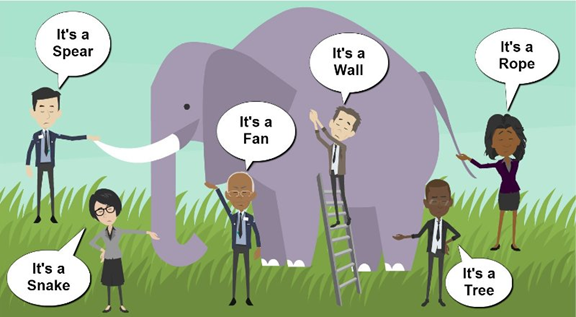
The right brain learner often has a longer list of strengths and challenges than others do. (picture source www.priyankadutta.com)
I have read thousands of reports over the years. To most parents, these reports can be overwhelming. Lots of words and pages of what they assessed and what the child is not good at. Most psychology professionals will report on a child’s strengths but that often gets lost when so much is suggested as to what should be addressed to help the child succeed. One of the most common findings is that a child is “weak in phonemic awareness” or “decoding skills”. It seems like other findings and suggestions – which admittedly are many- are overshadowed by the push to believe that if those skills are worked on exclusively, things will get better. Parents are bombarded by the notion that they need to have their kids spend hundreds of hours practicing and remembering rules of when certain sounds are made and that just by being able to sound out words, they will be able to comprehend what those words mean.
Many parents believe, The Science of Reading premise is that the Simple Formula of Reading is:
Decoding X Reading Fluency = Reading Comprehension
For many of us–and the thousands of students I have worked with, this just is NOT the case!
I, for one, need to have an understanding of what a word means… a picture in my head of an understanding of the word, within a context. In short, I need an understanding of LANGUAGE!
So many of our students can actually learn to decode. In isolation, they are able to tell me the individual sounds, and can put them together. What they struggle with is transferring or generalizing that skill when reading!
Another one of my favorite quotes is:
“Scientists have determined that it takes approximately 400 repetitions to create a new synapse in the brain- unless it is done with play, in which case, it takes between 10 and 20 repetitions!” Dr Karyn Purvis, a child development expert.
At 3D Learner, I have coined the term Flearning ® — where our goal is to have our students learn from AHA moment to AHA moment, by discovering the patterns. For the right brain learner, it is incredibly important to leverage their visualization skills and to make learning Fun.
Language, and the use of words come from play and discovery. As parents, it is vital that we create an environment where this is possible. It is also vital that we look at the whole child and sort out what things they CAN do and encourage that. If we only focus on what a child CANNOT do, they lose so much, self-esteem suffers, and anxiety takes over!
Understanding where the Science of Reading fits in the BIG PICTURE of what your child needs will lead to a way better outcome for success for your child. Not every child learns exactly the same way. What we do know is that the most effective way for kids to succeed in reading is for them to make connections: with their teacher, with words and with their experiences. If we listen and observe, they will show us what they need.
At 3D Learner, we provide an Integrated, Engaging, Fun and Effective way to improve reading fluency and reading comprehension.
If you would like to discuss how you can put your child on their Pathway to Reading Fluency and Reading Comprehension Success call us at 561-361-7495 or click here to schedule a no cost Pathway to Reading Fluency and Reading Comprehension Success Conversation.
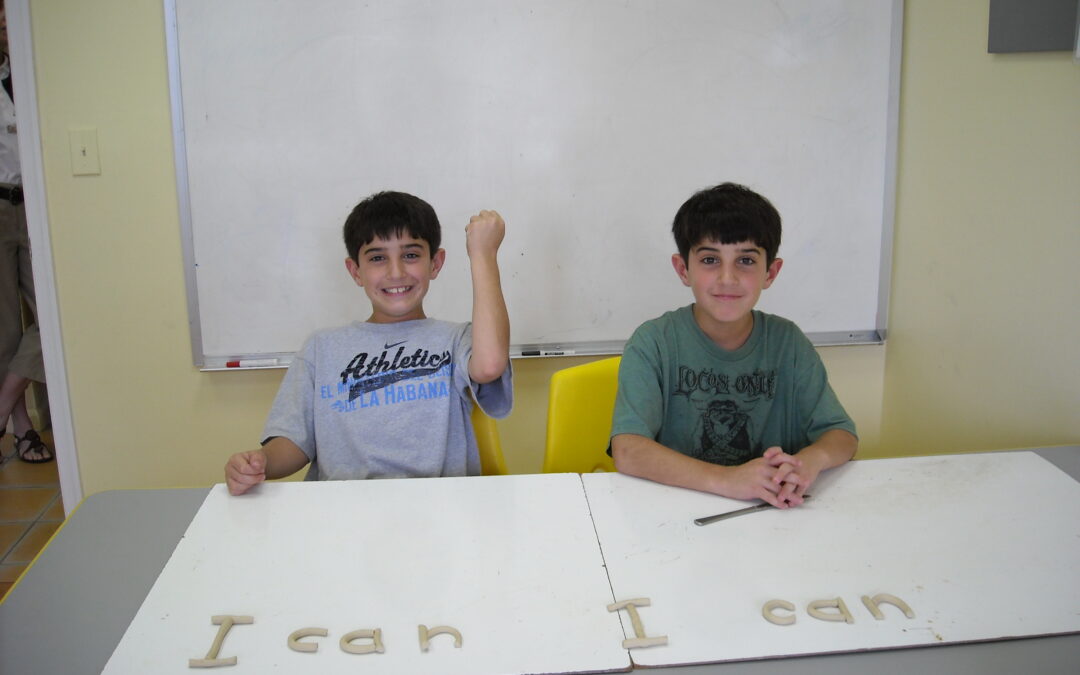
(Often Students Have Been Diagnosed with Dyslexia, ADHD and/or Executive Function Challenges)
3D Learner has helped hundreds of students from 40 different states and 12 foreign countries. These students often were identified with dyslexia, ADHD or executive function issues. Their parents were delighted to find a strength-based program that could teach to their child’s strengths, engage their child and result in significant gains in months.
Within our practice, we call these students a 3D Learner, that is they think in pictures and often in 3 dimensions. From a diagnostic standpoint, one might call them neurodivergent, right brain or kinesthetic learners.
7 Keys to the Success of our 3D Learner Students From Outside Our Area
- Very few programs focus on the strengths of these students. Note, while we might use more common terms like neurodivergent, right brain or kinesthetic learners in describing these kids, when they are here we use the term GOLD Student — Gifted Operating with a Learning Difference. Their gift is they learn differently and can do far better with a hands-on visual approach
- We assess for and address dyslexia, attention and executive function challenges
- We also assess for and address visual processing issues that are often present. These students often have excellent peripheral vision, but their eyes do not converge when reading
- We have 26 years of successes with these students and an excellent team. Note, the 3D Learner Program was developed by Mira Halpert for our daughter. Mira is an experienced educator, a mom who cares and a professional who is committed to helping our students succeed
- The parents really like the concept of an intensive effort that will help their child and them with follow up support.
- We help parents get the help their child needs at school
- The quality of the parents who show up. The students we see are often much smarter than present results would indicate, the parents want their child to succeed and together, we make it happen.
If you suspect this might be your child, we recommend downloading our “Is my child a neurodivergent, right brain or kinesthetic learner screening tool. Then sit down with your child and ask them the questions. Their answers may surprise you.
3D Learner — Intensive Live Training With On-Going Support Via Zoom
Note, initially we did the program in 5 days, with ongoing support. The results were very good.
Then, for clients east of the Mississippi, we started offering three days one week and two days 4 to 6 weeks later, with ongoing support. This resulted in even greater gains.
Now we offer both options, with ongoing support via zoom.
The intensive training with ongoing support works quite well, because:
- Intensive and integrated training works well for these students
- The parents are immersed in the process, too
- Family bonding is fun to watch and very helpful
- The on-gong support maximizes the benefits of the effort
How this works.
Parents often realize they have a child who is a lot smarter than present results would indicate. Parents also recognize that they want a transformational program that:
- Engages their child in the process with a strength-based approach
- Can generate significant results in months
- Addresses dyslexia, attention, visual processing and anxiety challenges
- Helps them to be even more effective coaches and advocates
- Can transform their child into a much more successful student, while improving their confidence, their sports ability and their attitude towards learning and their own talent
Three ways to get started with 3D Learner
Parents give us a call at 561-361-7495 for a no cost conversation on how we might be able to help their child succeed.
- The conversation is often helpful, even if the parents do not become clients. What happens with interested parents is we often hear:
- You really understand my child and me
- I now understand how you can help my child succeed
- If the parents want to move forward, we can do an online assessment and debrief, without their having to leave home
- If the parents want to pursue the program, we find A mutually agreeable time.
Example of our successes:
- A third grader was diagnosed with learning disabilities, ADHD and anxiety challenges. The initial conversation convinced mom we were the right answer. When talking with another mom, she was even more convinced. Her daughter was able to:
- Go from the lowest reading group in third grade to become the best reader in her fourth grade class
- Get homework done in less than half the time
- Flourish as a student and become both more successful and outgoing
They did the program in two parts.
- A 5th grader from Texas had been through a very expensive dyslexia treatment (i.e. $34000 worth) but her comprehension was still at the first grade level. With our help, she was able to:
- Improve her reading comprehension 4 grade levels in 6 months
- Decrease her homework time from 2.5 hours to 1.25 hours, and do it independently, for the first time
- Blossom as a person
They did the program in 1 week.
- More recently, a 7th grader from the State of Washington came to South Florida. With our help, he was able to:
- Improve his reading comprehension 4 grade levels in 6 months
- Become a star student
- Do his work independently.
They did the program in a week, with on-gong support via zoom.
For all our out of area clients, we now recommend blending in person work with on-going support via zoom.
If you would like to discuss how to help your right brain, kinesthetic or neurodivergent
child succeed, give us a call at 561-361-7495


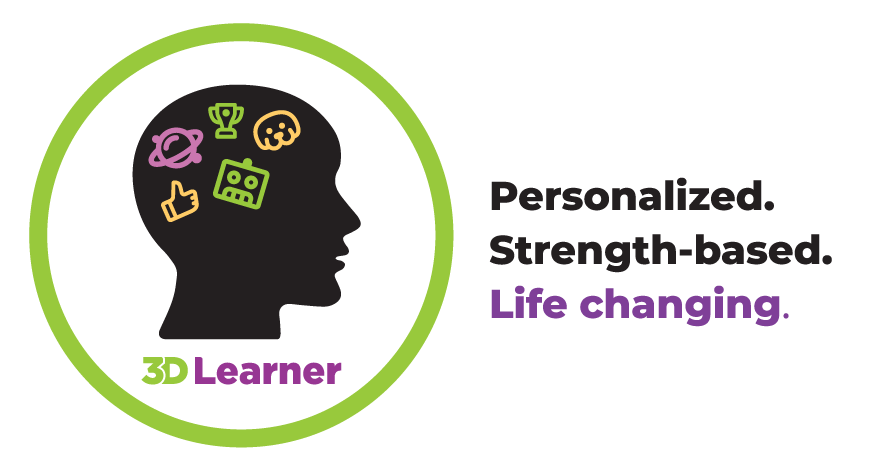
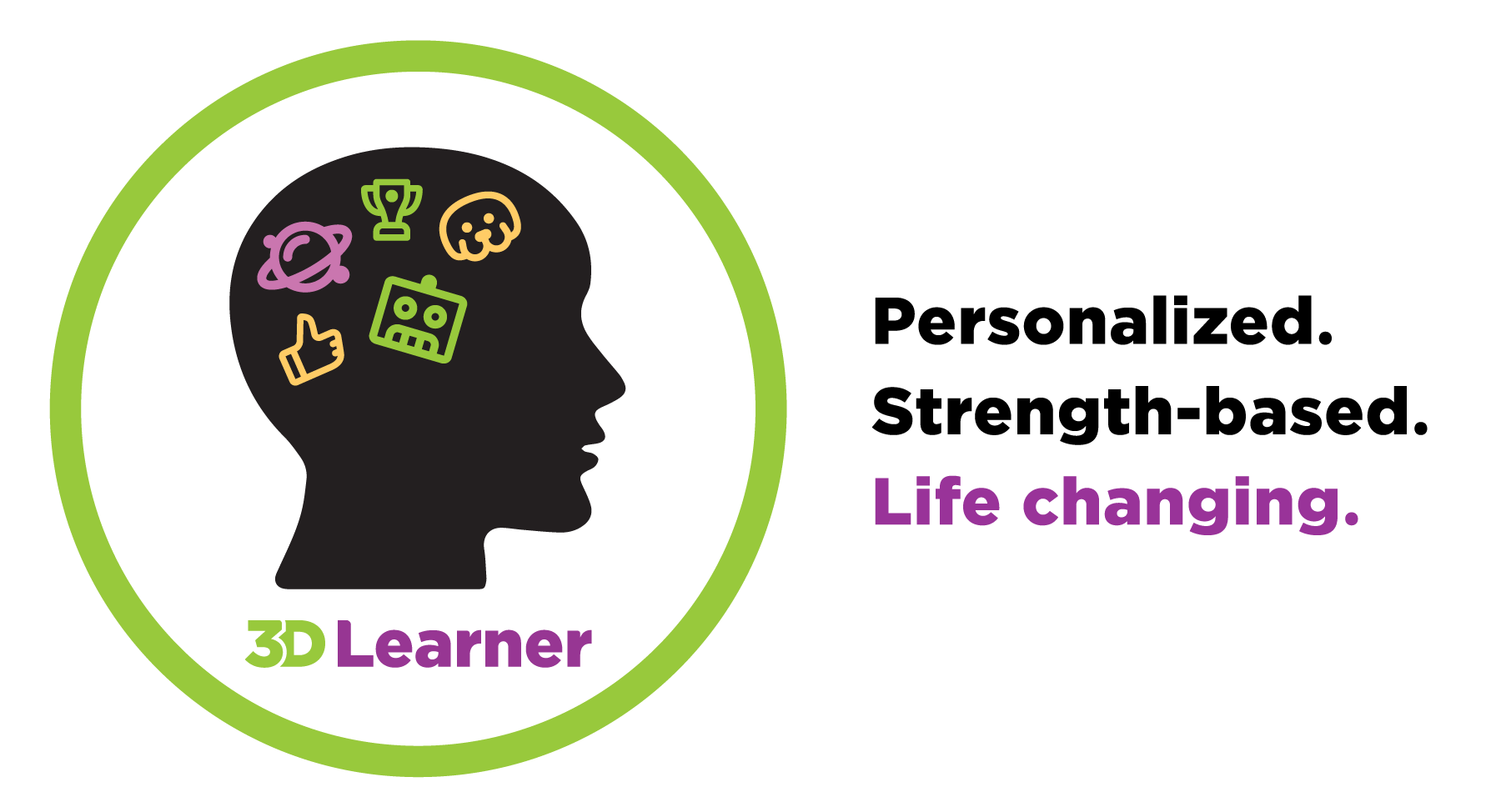





Recent Comments